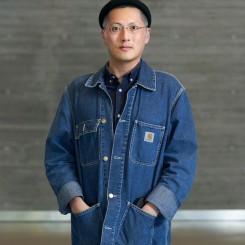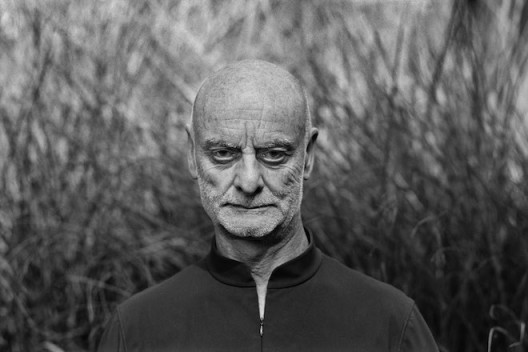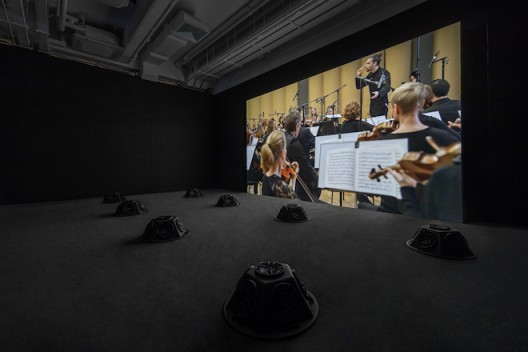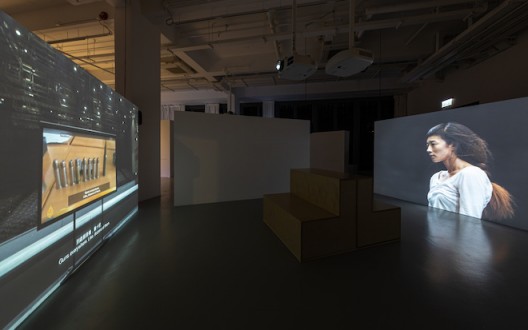Interview with Uli Sigg, Suhanya Raffel, M+ Director, and winner Samson Young
By Chris Moore
Sigg Prize 2019 exhibition
M+ Pavilion (Art Park, West Kowloon Cultural District, Hong Kong) 7 Dec. 7, 2019 to May 17, 2020
with Hu Xiaoyuan, Liang Shuo, Lin Yilin, Shen Xin Tao Hui and Samson Young
A prize is always as much about the giver as the receiver. This year’s inaugural Sigg Prize, successor to the esteemed Chinese Contemporary Art Award (CCAA), was as much about M+ as it was about the winner, Hong Kong’s own Samson Young. M+ is still in its gestation period but promises to become the most important art museum in Asia when its mammoth Herzog & de Meuron-designed Kowloon home opens next year. Ran Dian spoke with Uli Sigg and Suhanya Raffel by separate video conferences prior to the announcement.
>>for more on the history of CCAA read 15 Years of CCAA: Interview With Uli Sigg
Founded by Swiss businessman, Uli Sigg (b.1946, Lucerne), the most famous collector of Chinese contemporary art, the CCAA ran from 1997, whilst Sigg was still Swiss ambassador to China, until 2018, following the announcement of Sigg’s donation to M+ of over 1400 artworks, mostly 2012. The CCAA was easily the most renowned and reputable art prize in China, both confirming and heralding many of the most influential artists of the period. It was also expressly aimed at developing the institutions necessary for a vibrant and robust artistic culture beyond a febrile market, including encouraging a culture of critical writing. CCAA having become an institution in itself, M+ Museum Director Suhanya Raffel aims for the Sigg Prize to be the region’s answer to the Tate’s Turner Prize, if perhaps not as controversial. Yet we find ourselves suddenly in a time when art prizes are no longer prized but pushed to seeming parlor-game irrelevance by history, whether economic, political or viral.
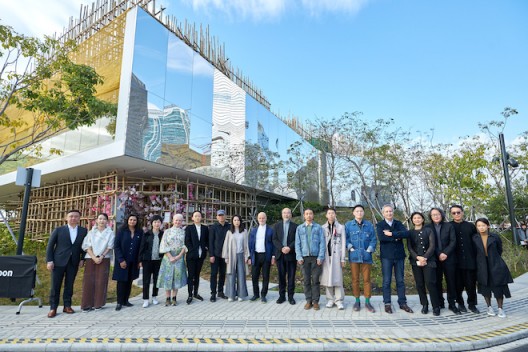
Dr Pi Li, Sigg Senior Curator, M+, Ms Liu Li Anna, Co-chairwoman of the Sigg Prize, Ms Suhanya Raffel, Museum Director, M+, and Co-chairwoman of the Sigg Prize, Ms Gong Yan, Director, Power Station of Art, Shanghai, guest, Shen Xin, Lin Yilin, Hu Xiaoyuan, Dr Uli Sigg, collector and member of the M+ Board, Mr Victor Lo, Chairman of the M+ Board, Liang Shuo, Tao Hui, Samson Young, Bernard Blistène, Director, Musée national d’art moderne, Centre Pompidou, Paris, Ms Lai Hsiangling, curator, Taipei, Mr Xu Bing, artist, Beijing, Mr Doryun Chong, Deputy Director, Curatorial, and Chief Curator, M+, Ms Isabella Tam, Associate Curator, Visual Art, M+. Courtesy of M+, Hong Kong
I called Uli at his home in Switzerland, which due to the pandemic lockdown he had not left for 6 weeks except to walk around the lake. Sigg notes it is “definitely the longest I have ever spent here.” I began the discussion by asking how the Sigg Prize differs from the old CCAA. “Well, the two-week process, first phase, was similar in that a jury convenes [and] looks at material put together by the nominators. But then the difference comes in: it’s not about already choosing a winner but choosing six finalists who are invited to do an exhibition. In the past we were not able to guarantee an exhibition in mainland China, not knowing ‘who’ and ‘where’ and ‘what’, therefore uncertain due to censorship constraints. So that’s already a major difference: a guaranteed exhibition, [and with] more resources than [CCAA] had. Then, in a next step, from the exhibition a winner is chosen. So, the process has also changed somewhat.” Similar in structure to the UK’s Turner Prize? “Yes, that has been one of the inspirations and it’s actually Suhanya’s ambition to make it for Asia what the Turner Prize is in Europe.” An initial long list of 35 artists was reduced to the 6 artist nominees.
The process of judging occurred prior to the lockdown but it was initially planned to announce the winner during Art Basel Hong Kong in March until the show was cancelled on February 6. The crisis also disrupted the opening of the Sigg Collection exhibition at Castello di Rivoli in Northern Italy. Sigg laughs ruefully, “Everyone spoils my party!” How has that progressed? “It was complicated. The opening was not allowed, [it was cancelled] just hours before. Then the exhibition opened one week later, for one week, and then the total lockdown happened. Since then it’s [been] closed.” [The exhibition reopened in May, with a prolonged run.] Facing the Collector: The Sigg Collection of Contemporary Art from China at Castello di Rivoli, February 25 to June 21, with works from The Sigg Collection and the M+ Sigg Collection.
Returning to the theme of Hong Kong, recently it has experienced protests, an economic downturn and now the effects of the Coronavirus pandemic. Part of the reason for Sigg offering his collection to M+ was that at the time Hong Kong offered a certain stability for keeping the collection and holding exhibitions by international standards compared with Mainland China, where that would be more complicated, but now Hong Kong is experiencing its own complications. I ask Sigg how he sees that affecting, firstly the prize and secondly M+? “As of now, there has not been an impact. We were still preparing the Sigg Prize without any interference. We held the exhibition of the Sigg Prize without interference, fully in the hands of M+. We prepared the opening with M+, the opening display, of which I’m a co-curator, fully independent of any intervention from any side. And the M+ board and West Kowloon Cultural District Authority (WKCDA) board have all committed to go ahead uninhibited, in a programmatic way, to do the opening as planned. So, as of now I can’t complain of any interference as having happened.” And there’s been no pressure from protestors? “No, not so far.”
And what do you think of the winner, Samson Young? “He’s a very interesting artist. Of course, if I look at the competition, he is one of six very interesting artists! What impressed us very much was the ease with which he moves across disciplines – music, visual arts, performance, et cetera. And it’s a result that can surprise people. It’s really a very different vista. You look at his work, you hear his words, the combination of it all. It is a very fresh type of artwork.” So, you are happy with the first edition of the Sigg Prize? Sigg responds emphatically, “Yes. The whole process was very smooth and it built on what we had done with CCAA together with Liu Li Anna in the chair helping me very much to bring it to a level which allows that further step to M+ and the whole cycle of preparing the first prize comes to an end tomorrow and gives me confirmation that I have done the right thing, to secure the future of the CCAA beyond my own presence. That was actually an important thing for me.”
The CCAA
First awarded in 1998, the CCAA was held biannually, later expanding to awarding Best Artist, Best Young Artist and Outstanding Achievement prizes, and from 2007 the CCAA Art Critics Award every other year. The CCAA’s was intended to encourage the development of China’s visual arts institutions and institutional practices. It consistently eschewed sponsorship to avoid the undermining of its purposes, including independence and general quality. Uniquely and demonstrating its founder’s savvy flair for networking, each jury member was a director or curator from a leading international institution, such as Ruth Noack, director of 2007’s documenta 12 in Kassel and Chris Dercon, then Tate Modern director. In addition, the panel was equally divided between Chinese and international members. The 2004 jury included Harald Szeemann, artist Ai Weiwei, Yi Ying, Alanna Heiss (then director of New York’s P.S.1, now MoMA PS1), curators Gu Zhenqing, Hou Hanru (since 2013 director of Rome’s MAXXI Museum), Uli Sigg and Karen Smith as director. The experience led Szeemann (1933-2005), one of the most influential curators of the last century, to stage a show of Chinese artists when he was Visual Arts Director at the Venice Biennale from 1999 to 2001, during which time he also rejoined the jury for CCAA’s 2000 edition.
Over its 19 years of operation, the CCAA had over 19 winning artists and 6 winning critics, 60 jury members, and almost 1000 entries. It published 13 books and held 3 exhibitions.
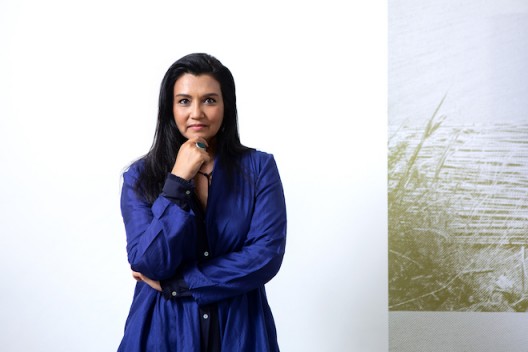
Suhanya Raffel
Museum Director, M+
Photo: Winnie Yeung @ iMAGE28 Courtesy of West Kowloon Cultural District Authority
Suhanya Raffel
The following day, on the morning of the announcement of the prize winner, I spoke with Suhanya Raffel by video conference – me in Saigon, Suhanya at home in Hong Kong. I started by asking Suhanya how the winner was decided. “With any kind of prize, [choosing] the winner is always a discussion, but I have to say [the decision] was unanimous. And the work is superb – Samson’s work is absolutely amazing! This is the last of [Samson’s] ‘Muted Situations’ and he’s been slowly thinking through and refining the form.” The first iteration of Young’s Muted Situations was commissioned by the Art Gallery of New South Wales, Sydney, for the 2018 Sydney Biennale. It is worth noting that Young completed his undergraduate studies in music, gender studies and philosophy at Sydney University in 2002.
Since opening in December last year, the Sigg Prize exhibition closed and reopened twice. With the massive construction site for the museum next door, even at the best of times the M+ Pavilion is not easy to reach. By the end of the exhibition in mid-May, over 7,000 people had visited the Sigg Prize but these numbers are still very modest compared with the over 140,000 visitors to the Turner Prize last year and London and Hong Kong are comparably large cities (it has just been announced that the Turner Prize for 2020 has been cancelled amid the ongoing pandemic restrictions). Yet the real proof of the Sigg Prize will only be revealed in the years to come after the M+ museum opens. As Raffel notes, “A museum can do something more substantial, [there can be] a conversation with the collection. Construction of M+ is now in its final stages, with building compliance certification being sought. I ask Raffel whether progress has been impacted by the Corona crisis. “Hong Kong has done very, very well with managing the virus. So, we’ve had two-/two-and-a-half thousand people on site with construction continuing. We’re just now in the phase of getting our licensing [e.g. health and safety]. We are looking to complete construction this year and open the museum next year. So, we’re working towards that timeline and it feels imminent now.”
A really big baby
M+ is the most important construction site in the territory. The objective is very clearly to build a major cultural and civic institution on the scale of the Pompidou in Paris or MoMA in New York. As Raffel remarks, “We are an equivalent institution to the Pompidou, SF MoMA and the Museum of Modern Art in New York, in the sense of that broad collection interest, from design, architecture, right through to visual art. But in the context of our city and the actual cast of the collection, which is so deeply Asian, is so unique to the world. So, it is a really important institution…it’s a game changer.”
With 65,000 square meters of space, including 33 galleries and 17,000 square meters of display and exhibition space, M+ is the same size as MoMA with its expansion when it reopened in October last year and it will be home to over 7000 objects and almost 40,000 archives, including for architecture and design, as well as learning center and Mediatheque with three cinemas. As Raffel says, “It’s a really big baby!”
The soft opening is planned for March 2021, which is when Art Basel Hong Kong will hopefully return to the city. The opening will be dramatic not least because of the LED façade. “Because the moving image is intrinsic to our collection, the tower has LED embedded in it and we will work with our collection to be made available in the evenings from 6 to 10 at night. I foresee many visitors arriving via that site during the evening and returning during the day.”
In the last 10 years the Hong Kong cultural scene has been utterly transformed from what was once from an institutional standpoint a cultural desert. The Asia Art Archive (AAA) is now the unrivaled historical library for the region. The once struggling Para-Site art space is now financially secure under the leadership of Cosmin Costinas and consistently produces amongst the most interesting exhibitions in the city. Both AAA and Para-Site have prospered from professionalized fund-raising and huge local support, particularly its art-collecting elite. Tai Kwun opened in 2018 in the former Hong Kong Central Police Station (another Herzog & de Meuron project), funded by the Hong Kong Jockey Club and under the leadership of Tobias Berger, former M+ visual art curator. The Hong Kong Museum of Art was revamped, and the somewhat aloof Asia Society continues to develop though more quietly than its compatriots.
I ask Raffel what is missing from the Hong Kong scene. “The university art museums that do a splendid job could really step up” (renowned for her diplomacy, Raffel is a master of giving criticism in a silk glove). “It’s a great space in terms of the relationship between learning and the academy. And, to be a real cultural capital you need seven major institutions.” We are discussing the Hong Kong Museum of Art, the Heritage Museum and the History Museum. Raffel says it is important, “for them to step up into being real global institutions and with the kind of governance that gives them to the independence to produce content and then let it travel!” Raffel notes that the Hong Kong Museum of Art has one of the most important 19th Century Chinese painting collections in the world.
We have reached the end of our talk and return to the problem all museums are facing with lockdowns and the concomitant economic pressures. Raffel is philosophic, noting how staying at home also means everyone has more time to think. “Art sustains people and in times of crises. It keeps you from going mad. You lose yourself in creative work.”
2020 Sigg Prize winner Samson Young on Muted Situations #22: Muted Tchaikovsky’s 5th, 2018
Samson Young was born in 1979 in Hong Kong. Following undergraduate studies at the University of Sydney, Samson completed an Master of Philosophy at University of Hong Kong and a Doctorate at Princeton University. He lives and works in Hong Kong
On his piece for the Sigg Prize exhibition, Samson says: “In my mind #22 is the ‘muted performance’ idea in its most condensed form, but in a way that also makes #22 the most esoteric of all of the Muted Situation series of works. I have had audiences watch the piece for like a half a minute and thought they “got it” as being just a sort of John-Cagean gesture of silence, which, it most certainly isn’t. The intensely suppressive focus of ‘muting’ is almost the gestalt negative of the zen-like non-intentionality of Cagean silence. For that reason I am particularly happy that this piece was awarded.
“Muted Situations #22 had many moving parts and wouldn’t have been possible without the musicians of the Flora Sinfonie Orchester, its conductor Thomas Jung, Mami Kataoka who commissioned the work for the Sydney Biennale, and the team at Galerie Gisela Capitain who helped me find the local film and sound crew in Cologne.”
And on winning the inaugural Sigg Prize: “It feels a bit like winning the lottery really, which, in this sort of economic climate, I am frankly just thankful for!”
Samson Young was awarded HKD 500,000 (about USD 64,500) and the other nominees each receiving HKD100,000. Winner of the Sigg Fellowship was Yang Zi.
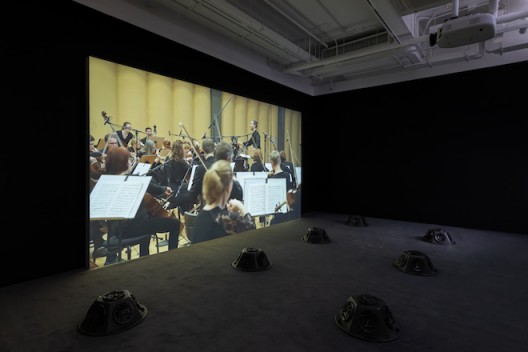
(top and bottom) Samson Young, Muted Situations #22: Muted Tchaikovsky’s 5th, 2018, 45 min.
Courtesy of the artist
Installation view, 2019. Image: Winnie Yeung @ iMAGE28
Courtesy of M+, Hong Kong
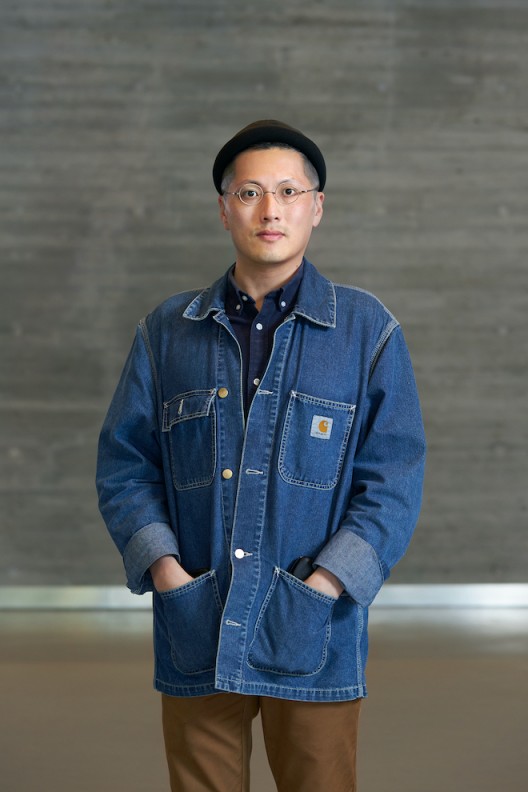
Samson Young
Image: Winnie Yeung @ iMAGE28 Courtesy of M+, Hong Kong
楊嘉輝
攝影:Winnie Yeung @ iMAGE28 圖片由香港M+提供
List of Past Winners of the Chinese Contemporary Art Award, CCAA
1998 Zhou Tiehai (b.1966, Shanghai).
2000 Xiao Yu (b.1965, Inner Mongolia).
2002 Sun Yuan & Peng Yu (b.1972, Beijing and b.1974, Heilongjiang)
2004 Xu Zhen (b.1977, Shanghai); Young Artist Award, Song Tao (b.1979, Shanghai); Contribution Award, Gu Dexin (b.1962, Beijing).
2006 Zheng Guogu (b.1970, Yangjiang); Young Artist Award, Cao Fei (b.1978, Guangzhou);
2008 Liu Wei (b.1972, Beijing), Young Artist Award, Tseng Yu-Chin (b.1978, Taiwan); Lifetime Achievement Award, Ai Weiwei (b.1957, Beijing).
2010 Duan Jianyu (b.1970, Henan Province), Best Young Artist, Sun Xun (b.1980, Fuxin, Liaoning Province); Lifetime Achievement Award, Zhang Peili (b.1957, Hangzhou).
2012 Pak Sheung Chuen (b.1977, Fujian, emigrated 1984, Hong Kong); Best Young Artist, Yan Xing (b.1986, Chongqing); Lifetime Contribution Artist, Geng Jianyi (b.1962, Zhengzhou, Henan province, d.2017, Hangzhou)
2014 Kan Xuan (1972, Xuancheng, Anhui Province); Young Artist Award, Ni Youyu (b.1984, Ganzhou, Jiangxi province); Outstanding Achievement, Song Dong (b.1966, Beijing).
2016 Cao Fei (b.1978, Guangzhou); Young Artist Award, He Xiangyu (b. 1986, Kuandian); Outstanding Achievement, Xu Bing (b.1955, Chongqing).
Nominees for the 2020 Sigg Prize were –
Hu Xiaoyuan
Liang Shuo
Lin Yilin
Shen Xin
Tao Hui
and Samson Young
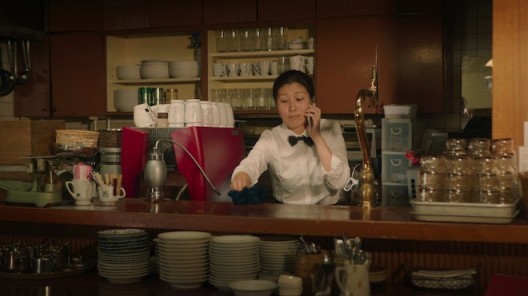
Tao Hui, Hello, Finale!, 2017
HD video installation (colour, sound), 40 min.
Courtesy of the artist, Kyoto Art Center, Rockbund Art Museum, and Luxelakes·A4 Art Museum
Image: Courtesy of the artist
Tao Hui, born 1987, Yunyang, Sichuan Province. Lives and works in Beijing
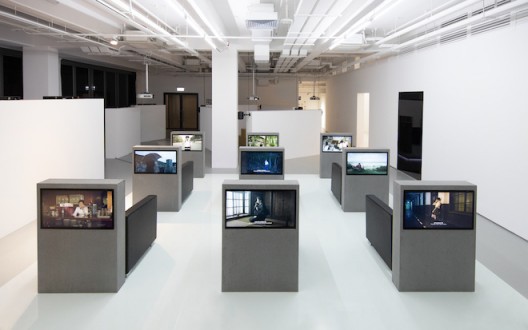
Tao Hui, Hello, Finale!, 2017
HD video installation (colour, sound)
40 min.
Courtesy of the artist, Kyoto Art Center, Rockbund Art Museum, and Luxelakes·A4 Art Museum
Installation view, 2019. Image: Winnie Yeung @ iMAGE28
Courtesy of M+, Hong Kong
Lin Yilin, born 1964, Guangzhou, Guangdong Province. Lives and works in New York
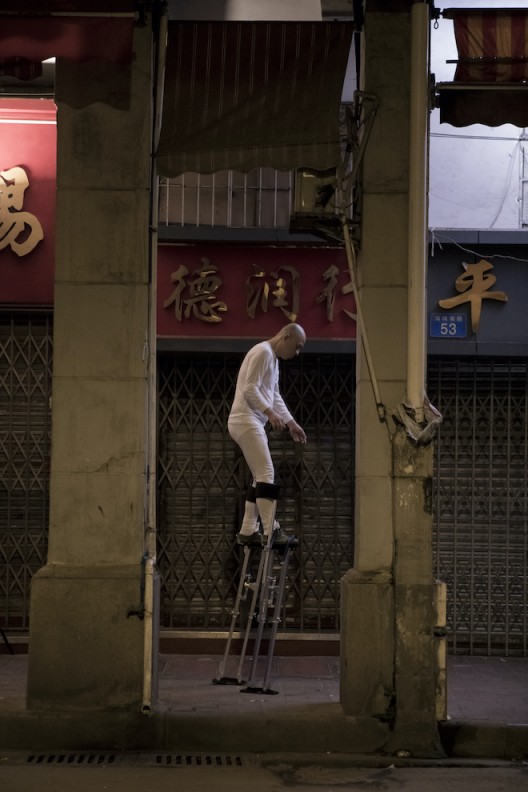
Lin Yilin, Typhoon, 2019
Video (colour, sound)
33 min. 33 sec.
Commissioned by M+, Hong Kong
Image: Courtesy of the artist
Liang Shuo, born 1976, Tianjin. Lives and works in Beijing
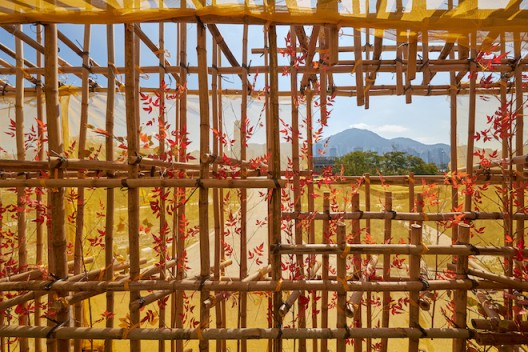
Liang Shuo, In the Peak, 2019
Bamboo, plastic mesh, and artificial branches Dimensions variable
Commissioned by M+, Hong Kong
Installation view, 2019. Image: Winnie Yeung @ iMAGE28
Courtesy of M+, Hong Kong
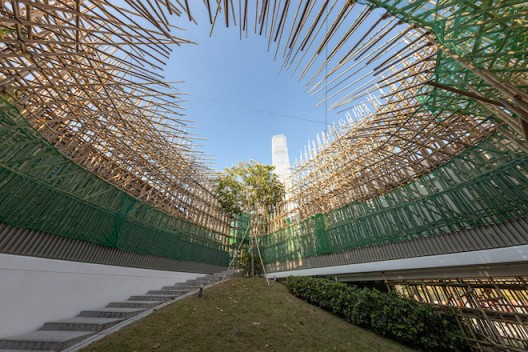
Liang Shuo, In the Peak, 2019
Bamboo, plastic mesh, and artificial branches Dimensions variable
Commissioned by M+, Hong Kong
Installation view, 2019. Image: Winnie Yeung @ iMAGE28
Courtesy of M+, Hong Kong
Hu Xiaoyuan, born 1977, Harbin, Heilongjiang Province. Lives and works in Beijing
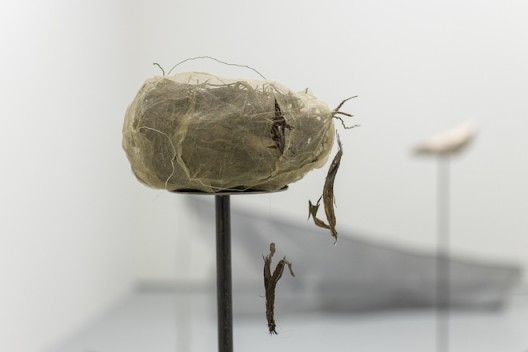
Hu Xiaoyuan, Spheres of Doubt, 2019
Steel bar, marble, wood, raw silk, wooden stick, sea water–eroded limestone, glass cup, body soap, cast-iron scale, brick, cement, bird’s nest, and passion fruit
Dimensions variable
Commissioned by M+, Hong Kong
Installation view, 2019. Image: Winnie Yeung @ iMAGE28
Courtesy of M+, Hong Kong
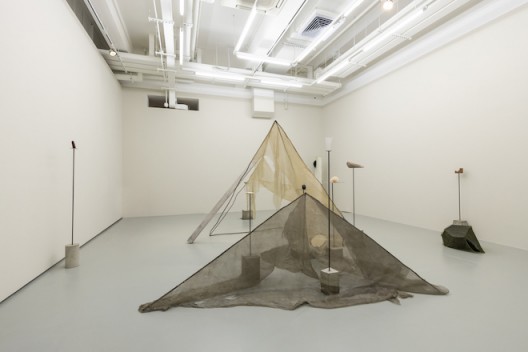
Hu Xiaoyuan, Spheres of Doubt, 2019
Steel bar, marble, wood, raw silk, wooden stick, sea water–eroded limestone, glass cup, body soap, cast-iron scale, brick, cement, bird’s nest, and passion fruit
Dimensions variable
Commissioned by M+, Hong Kong
Installation view, 2019. Image: Winnie Yeung @ iMAGE28
Courtesy of M+, Hong Kong

